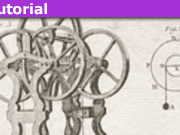Corrections to MIT Open Courseware: Systems of Varying Mass
Corrections to
MIT Open Courseware 8-01sc classical mechanics,
fall 2016
Applying Newton’s Laws to systems of Varying Mass
My concerns with the solutions provided on the cited MIT Open Courseware web page are, mostly:
Despite arriving at the correct answers, the algebraic methods are invalid. As a result, they can be utterly confusing to the student.
The main flaw, repeated throughout, is writing a system state (momentum) as a function of time only, but effectively defining it as a function of two variables. In some places, this leads to contradictory equations.
This mangled treatment likely results from an attempt to use ##F=\frac {dp}{dt}## in conjunction with ##\frac{dp}{dt}=m\frac{dv}{dt}+\frac{dm}{dt}v##, instead of the deprecated ##F=ma##. As we shall see, although the ‘more fundamental’ momentum change formula can be made to work, the simpler formulation is more direct.
An obsession with applying calculus from first principles, considering small increments of time Δt and taking limits.
While it may be worth such a painstaking procedure for one example, it is more useful to the student to learn how to solve the problem in a few lines.
p 12-2:
“12.1.2 Transfer of Material Out of an Object, but no Transfer of Momentum
The material continually leaves the object but it does not transport any momentum away from the object in the direction of motion of the object (Figure 12.2). Consider an ice skater gliding on ice at speed v holding a bag of sand that is leaking straight down with respect to the moving skater. The sand continually leaves the bag but it does not transport any momentum away from the bag in the direction of motion of the object. In Figure 12.2, sand of mass Δms leaves the bag. “
Nonsense.
The sand leaves the bag with the same forward velocity as the skater. In the ground frame, that means it is transporting momentum. Only in the skater’s frame is there no transfer.
What is true is that the departing sand exerts no actual force on the bag.
Contrast this with 12.1.1, Rain falling vertically into a cart, where there is no momentum transfer in the ground frame but there is in the cart’s frame, and the rain does exert a horizontal force on the cart.
p 12-3:
“12.1.4 Material Continually Ejected From Object results in Recoil of Object
…. The speed of the backwardly ejected fuel is u − vr (Figure 12.4b)”
Strictly speaking, the sign of u − vr is unknown, so it should say |u − vr |.
p 12-4:
Now we come to the source of real trouble:
“We must carefully identify the momentum of the object and the material transferred at time t in order to determine psystem (t) . We must also identify the momentum of the object and the material transferred at time t + Δt in order to determine psystem (t + Δt) as well. …”
It is unclear from this what is meant by “the system”. If the momentum of the mass lost in (t, t+ Δt) contributes to psystem (t + Δt), when does it stop contributing?
” … Recall that when we defined the momentum of a system, we assumed that the mass of the system remain constant. …”
It is not necessary to make that assumption merely because of using ##\frac{dp}{dt}=m\frac{dv}{dt}+\frac{dm}{dt}v##. What is to be avoided is then writing ##F=\frac {dp}{dt}##, where F is the net external force.
“… Therefore we cannot ignore the momentum of the transferred material at time t + Δt even though it may have left the object; it is still part of our system (or at time t even though it has not flowed into the object yet). “
This reveals a notational flaw. The definition of the system has two parameters, t and Δt, but only one appears in the function psys. In this formulation, p(t) should be written as p(t, t) and p(t+Δt) as p(t, t+Δt).
At Example 12.2 Emptying a Freight Car, this view of ‘the system’ leads to this pair of equations:
p 12-6:
p(t) = mc(t) vc(t) | (12.3.6) |
p(t+Δt) = (Δms+mc(t) + Δmc)(vc(t)+Δvc ) | (12.3.7) |
where
ms is the mass of sand which leaves in (t,t+Δt)
mc is the mass of the cart plus its remaining sand
Thus, Δmc+ Δms=0.
The alert reader will notice that (12.3.7) is provably false. Given (12.3.6), it is a simple matter of algebra to deduce that p(t+Δt) = (mc(t) + Δmc)(vc(t)+Δvc). That is true regardless of the meanings of the variables. (12.3.7) is the same but with a spurious term Δms.
This contradiction is a direct result of ignoring the dependence of the defined system on a second parameter, Δt.
It may be possible to rectify the equations with a notation correctly capturing this definition of the system. Much easier, though, is to define the system as the cart plus its remaining sand at any given instant. This makes it a varying mass system.
Equation (12.3.6) remains valid, but (12.3.7) becomes (12.3.7a):
p(t+Δt) = (mc(t) + Δmc)(vc(t)+Δvc) | (12.3.7a) |
Δp(t) = p(t+Δt) – p(t) = mc(t) Δvc+Δmcvc(t) | (12.3.8a) |
The loss of sand carries away with it momentum Δmsvc(t). So, in the absence of any external force, the conservation law is
p(t) = p(t+Δt) + Δmsvc(t) = p(t+Δt) – Δmcvc(t) | (12.3.9a) |
Since there is an external force F, we have instead
p(t)+FΔt = p(t+Δt) – Δmcvc(t) | (12.3.9b) |
Δp(t) = p(t+Δt) – p(t) = F Δt+Δmcvc(t) | (12.3.9c) |
Combining (12.3.8a) with (12.3.9c) :
mc(t) Δvc+Δmcvc(t) = F Δt+Δmcvc(t) | (12.3.9d) |
mc(t) Δvc = F Δt | (12.3.9e) |
F=mc(t) dvc/dt | (12.3.10) |
But how much simpler to observe that since the departing sand exerts no actual force on the cart we can apply F=ma and immediately write down the equation (12.3.10)!
p 12-8:
“Example 12.3 Filling a Freight Car “
“Define the system at time t to be the car and grain that is already in it, which together has mass mA(t) , and the small amount of material of mass Δmg that is blown into car A during the time interval [t,t + Δt] …”
So here we have the same awkward system definition but in reverse: the momentum of ‘the system’ includes the matter about to join it. Consequently, we once again have contradictory equations:
p 12-9:
The momentum at time t is
Psys(t) = mA(t)vA(t) + Δmgu | (12.3.17) |
The momentum at time t+Δt is
Psys(t+Δt) = (mA(t)+ΔmA)(vA(t) + ΔvA) | (12.3.18) |
Equation 12.3.18 implies Psys(t) = mA(t)vA(t), contradicting 12.3.17.
This can be rectified as above for Example 12.2. More simply, we can consider cart A as exerting a force on the arriving grain sufficient to bring it to A’s velocity. The reaction accelerates the cart:
##m_A(t)\dot v_A(t)=\dot m_A(t)(u-v_A(t))##
Arriving swiftly at (12.3.25) and (12.3.29):
##\frac{dv_A}{u-v_A}=\frac{d m_A}{m_A}##
##m_Av_A=(m_A-m_{A,0})u=btu##
But simplest of all, since cart A started from rest, the momentum of the cart+grain system at time t is equal to the total momentum delivered by the incoming grain:
##m_A(t)v_A(t)=btu##
p 12-11:
“Example 12.4 Boat and Fire Hose “
This question is subtler in that the rate of arrival of mass is not constant. Instead, it is proportional to u-v(t), where u is nozzle speed and v(t) is the boat speed. Specifically
##\dot m_b=\alpha\frac{u-v_b(t)}{u}##
Equation (12.3.29) remains valid, but with changed variable names:
##m_bv_b=(m_b-m_0)u##
Combining these:
##\dot m_bu=\alpha (u-v_b(t))=\alpha(u-u\frac{m_b-m_0}{m_b})=\alpha u\frac{m_0}{m_b}##
Since mb=m0 at t=0:
##m_b^2=m_0^2+2\alpha m_0t##
p 12-17:
“12.3 Rocket Propulsion”
“During this interval, choose as our system the mass of the rocket at time t “
Once again, it transpires that the text means this in the sense that the system for the period [t, t+ Δt] is the mass at the start of that period. Consequently, it is not appropriate to write its momentum as a function of time t only.
Using the more obvious interpretation of psys(t)=mr(t)vr(t) (12.3.68), we have
psys(t+Δt)=mr(t+Δt)vr(t+Δt) | (12.3.70a) |
In this interval, the exhaust has mass –Δmr and carries away momentum –Δmr(vr-u).
(Note that this is using the text’s definition of the scalar u, i.e. positive in the opposite sense to v. )
Applying momentum conservation (in the gravity-free case):
psys(t+Δt)=psys(t)+Δmr(vr-u) | (12.3.74a) |
Combining (12.3.68), (12.3.70a) and (12.3.74a) we have
mr(t+Δt)vr(t+Δt)=mr(t)vr(t)+Δmr(vr-u) |
In the limit:
##\dot m_rv_r+m_r\dot v_r=\dot m_r(v_r-u)##
##m_r\dot v_r=-\dot m_ru## (12.3.81)
Masters in Mathematics. Interests: climate change & renewable energy; travel; cycling, bushwalking; mathematical puzzles and paradoxes, Azed crosswords, bridge










Leave a Reply
Want to join the discussion?Feel free to contribute!